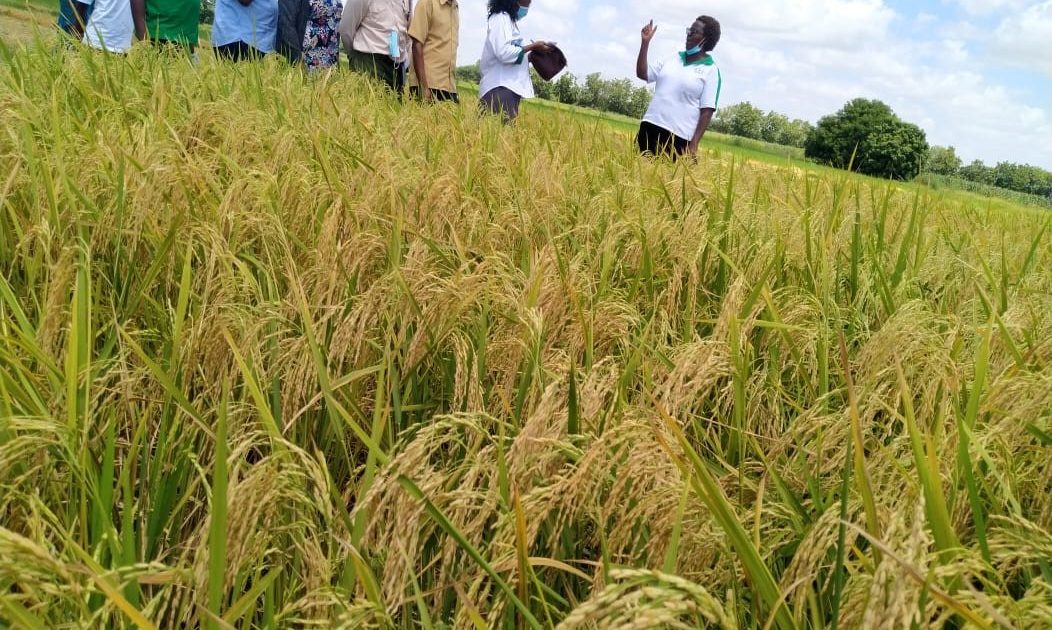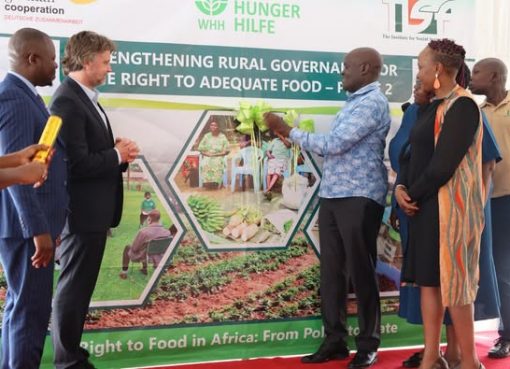The government has embarked on an aggressive campaign to meet the growing demand for rice through a campaign dubbed “National Rice Development Strategy (NRDS) that runs from 2019 to 2030.
The strategy aims to identify rice hubs, improve on varieties in order to increase production and bridge the country’s deficit to reduce importation of related products.
Kenya’s domestic rice sector has not satisfied the increasing demand for rice and this is aggravated by the population growth of the middle class and urbanization with people who are increasingly relying on rice for food
Dr. Mary Mutembei from State Department of Crops at the Ministry of Agriculture and Head of rice promotion programme says the country needs to move from Production of only 15 percent of what it consumes and stop spending more on importation.
“We spent Ksh25 billion last year to import rice despite us tripling our production from 50,000 metric tons to 150,000 metric tons in the last 10 years and this shows there is still a huge gap to fill,” she said.
Mutembei who was speaking during a farmer’s field day at the Bura Irrigation Scheme where the Kenya Agricultural Livestock Research Organization (KALRO) is promoting new high yielding rice varieties said the whole programme gears towards increasing food security and incomes through sustainable rice production.

“More intervention is needed to increase the area under rice production, improve irrigation infrastructure and currently we have identified 24 counties where rice can be produced comfortably,” she said.
Mutembei added that the development of new varieties and new technologies, by KALRO through research has seen farmers embrace and now will not only progress the rice value chain but be able to satisfy the country’s demand.
Dr. Ruth Musila, a plant breeder from KALRO said the gap between rice production and consumption in Kenya is huge with imports representing 89 percent.
“The year 2020/2021, the country consumed 730, 000 metric tonnes yet we only produce 80,000 metric tonnes, and importing around 650,000 metric tonnes,” she explained.
Musila said that in order to reduce the gap, strategic interventions such as embracing improved high yielding rice varieties practicing good agronomic practices for rice production, mechanization and expansion of irrigation schemes is needed.
KALRO together with International Rice Research Institute (IRRI) and other partners, she said have released high yielding rice varieties to rid of the low yielding seeds that were released over 30 years ago and that farmers have been planting and recycling for long.
“We are promoting and popularizing the new varieties to increase adoption by using on farm trials and farmer field days and so far we have released Komboka and 08FAN10 since last year that are doing very well both in Mwea and also here in Bura irrigation scheme but also being introduced in 24 other locations across the country,” Musila said.
Komboka rice in Bura Irrigation Scheme is a success story, she said noting that when farmers started planting last year in October, the area under the variety was only 700 acres but by last month, December 2021 after the promotion the area had increased by 80 percent to 3640 acres.
Komboka rice variety, Musila further explained, is high yielding, preferred by farmers as it is also tasty compared to local basmati rice while the price is also low . Another variety- new 08FAN10 that has been dubbed as “Mkombozi” by farmers is also preferred because of its early maturing within 85 days after transplanting and only taking between 95 and 105 days to maturity.
“The Basmati variety that is preferred by only 10 percent of Kenyans is quite costly as it goes for Sh 120 per Kilo, but for the new komboka variety, it is cheaper and sells for Sh 100 per kilo and thus affordable to consumers,” she added.

The new improved crops, Musila said will automatically be able to replace the imports, considering the basmati variety would in one acre of land yield around 2.5 tonnes compared to the new improved varieties which yields around 6 to 7 tonnes which is 100 percent more of what local varieties are yielding thus giving farmers higher prices
“We want the new varieties to compete with the imports and we are targeting schools and institution and asking farmers to embrace the high improved varieties to fill in the huge gap between production and consumption,” Musila said adding that the seed is available and also at the national cereal board thus it’s easy for the country to move towards rice self sufficiency
John Macharia, a farmer in Bura Irrigation Scheme since 1982 and growing cotton, Maize and then Basmati rice said that since he started planting Komboka rice, he had managed to transform his life completely.
“This variety of rice is early maturing and within 76 days I am able to harvest. A farmer introduced it but now we have around 200 farmers growing it within 2500 acres of land,” he said.
Macharia says that when it comes to pricing, the Cereal board has been purchasing from them at Ksh43 per Kg and that payment is prompt.
“From the first harvest two years ago, I was able to make Sh 170,000 profit from one and half acre of land that I had planted in Komboka,” he said noting that he normally gets between 45 to 50 bags of 100kgs per in one and a half acre of land.
Twenty – nine (29) year old Immaculate Wanjira Mboya, another young farmer from Bura Irrigation Scheme said her life and those of her siblings improved after giving the komboka rice varieties a try during the last seasons.
“Initially, I used to grow maize and cotton which had a myriad of challenges and minimal profit. I used to make around Sh 90,000 and Sh 20,000 respectively in the two crops,” she said.
Wanjira says that since she planted komboka rice in a three-acre land, she was able to harvest 60 sacks and sold them for Sh 250,000. In the next harvest she doubled her acreage and made Sh 700,000.
“I have realized that rice farming will not let me down and despite us having a challenge with farm inputs especially UREA fertilizer which has doubled from Sh 3,100 to Sh 6,900, I am planning to double my acreage to 12 in my next planting,” she said.
Dr. Robert Musyoki, Director KALRO seeds said that the government has been opening up and expanding irrigation schemes in the country thus it will be prudent to ensure that farmers get the right seeds variety, certified and also available.
“Initially farmers used to grow rice and recycle the same rice but now we want to ensure that they have certified seeds that yield more,” he added.
Musyoki noted that to ensure there is enough supply especially in Bura, they have contracted farmers as seed growers, and they usually give them high value basic seeds and once they plant, KEPHIS inspects and then they collect, process, package and avail again to the farmers.
So far, KALRO Mwea has released a total of 9 improved rice varieties for both upland and lowland agro-ecologies. Other varieties in the pipeline are Orylux 6 and CO3 that are already in National Performance Trials LWD/TZ/053 and LWD/TZ/022 candidates of NPT.
Kenya’s urban population is projected to reach 50 percent of the total population by 2050, which means the demand for food will lead to a significant deficit in milled rice.
Currently, the demand for rice per individual per year is 20.6 kgs. In 2020, the country produced 180,000 MT, which is projected to increase by 10 percent to produce 520,000 MT by 2030. Despite this, it is expected that rice import dependency ratio will remain high at 89 percent
By Wangari Ndirangu





